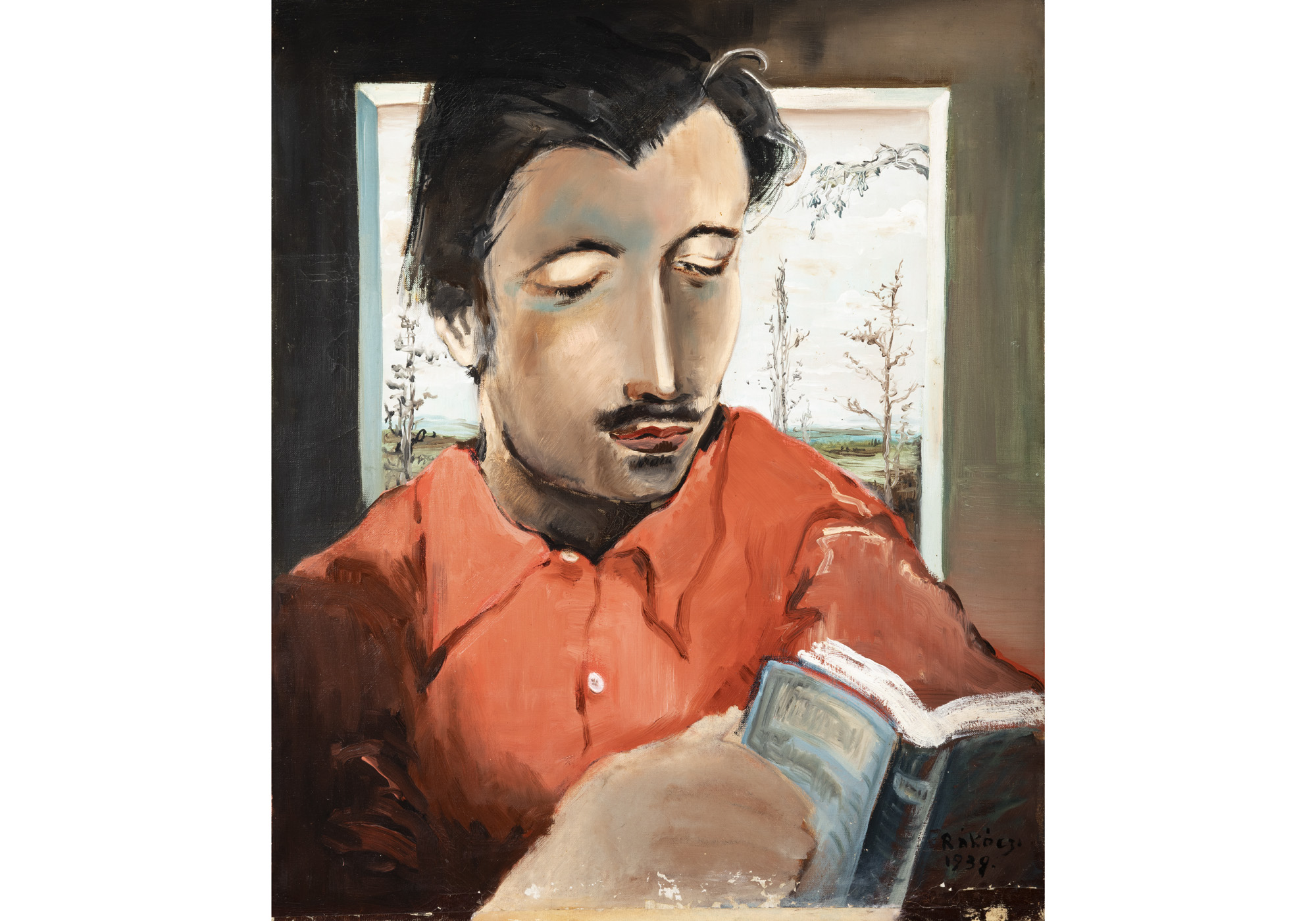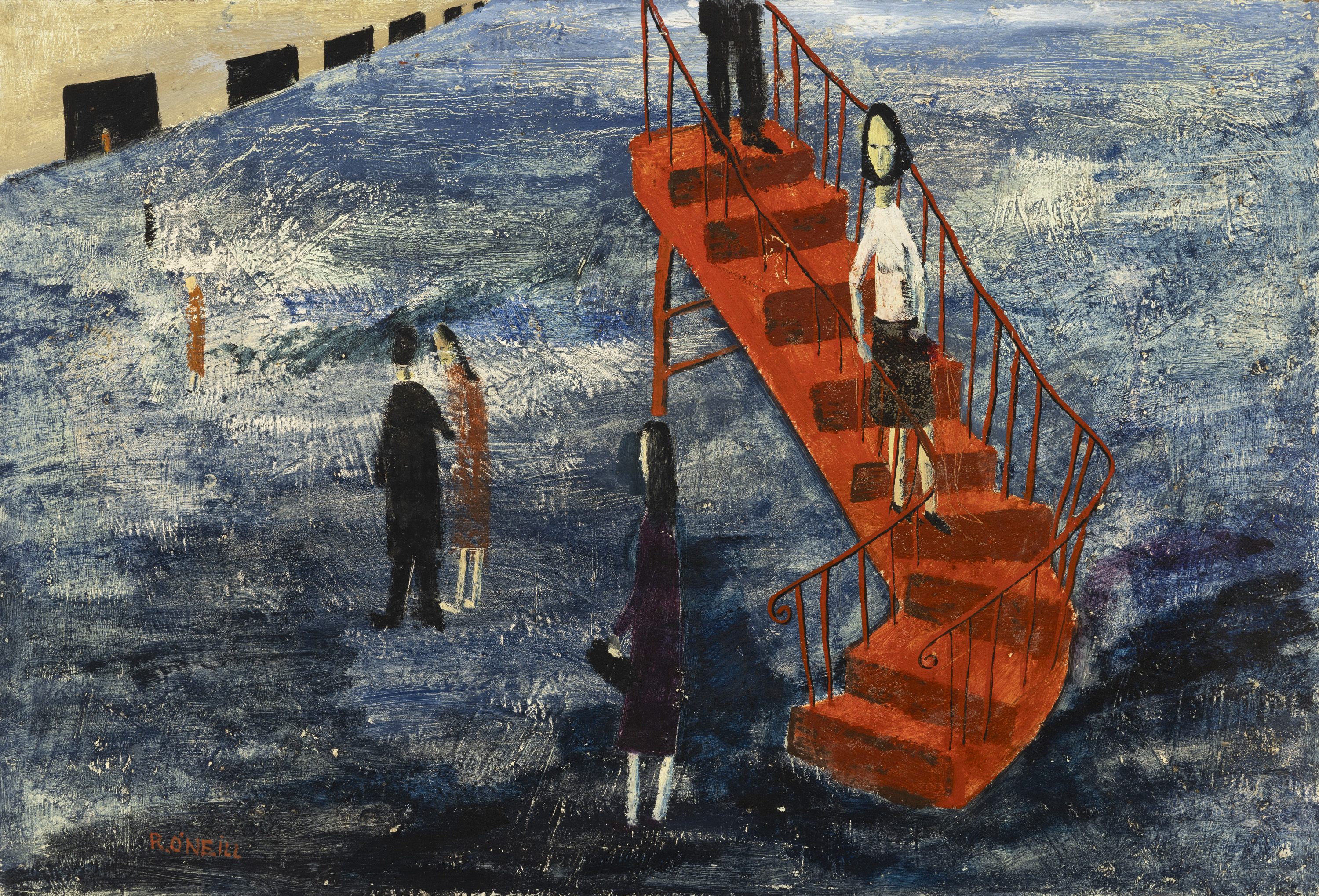Departments
.svg)




As part of our annual Library Collection Auction, we are delighted to present this wonderful collection of American furniture, books and effects from Dawesfield, Lewis Lane, Ambler, Montgomery County, Pennsylvania, USA.
This collection was part of the original contents of Dawesfield – an iconic American farmhouse built by Abraham Dawes and by descent through generations of the female line. (LOTS 92 - 175)
Dawesfield is a colonial federal gentleman’s farmhouse in Montgomery County, Philadelphia. The house was originally built c.1728 by the Quaker merchant, Abraham Dawes.
The settlement was surrounded by stone-built vernacular agricultural buildings and the house was extended in 1743 and again in 1785. A large south wing was added in 1821 with further alterations made by the Cheston family in the early 20th century. Within the grounds grow native American oak trees, which have been planted over many generations. To this day the house preserves the ambiance of an iconic American tradition.
Abraham Daw(e)s was son of Abraham Daws, a Quaker from Wales, who settled in the area and acquired 600 acres of land in Montgomery County. Dawes styled himself as ‘yeoman’ and had become a Justice of the Peace by 1752.
THE AMERICAN REVOLUTION
His daughter Elizabeth, who was married to James Morris (also a Quaker) inherited the house. James undertook a full public and military career which brought him into disfavour with the Quakers. It was during this time that Dawesfield, became associated with The American Revolution. The house was known as ‘Camp Morris’ and served as George Washington’s headquarters from 20th October to 2nd November,1777. This was directly after the defeat at the Battle of Germantown when Washington retreated with his army down the Skippack Pike. General Lafayette, who was injured at the Battle of Brandywine sought refuge at Dawesfield, whilst recovering from a leg wound. Also, General ‘Mad Anthony’ Wayne, apparently at his own request was court martialled in the West Parlour, on his conduct with the ‘Paolo Massacre’.
DR. THOMAS CHALKEY JAMES (1766-1835)
Dawesfield then passed to the Morris’s only surviving child Hannah, who married Dr Thomas Chalkley James in 1802. Dr James was a Philadelphia physician and joined the staff of the Pennsylvania Hospital. In 1810 he was elected professor of midwifery at the University of Pennsylvania. It was during this time that he worked on improving the library at the hospital. Also, he served as a physician with the charitable Society of the Sons of Saint George and the Philadelphia Dispensary. He favoured being part of the intellectual and scientific life of Philadelphia, Dr James was a member of the American Philosophical Society, the librarian of the College of Physicians and a founder of the Historical Society of Pennsylvania. It is known that he preferred a quiet literary life at Dawesfield, which is witnessed by the categories of books that were housed in the library (lots 133-160)
Their daughter Phoebe inherited the house and 109 acres of the estate in 1842. In 1843, she married Saunders Lewis a successful lawyer of Philadelphia. They had both fallen out of favour with the Quakers and changed to the Episcopal Services. As the family was now mainly resident in the city, Dawesfield became a summer house. Lewis made numerous alterations and improvements including the gardens, which were consistent with the fashion at the time.
In 1901, Bessie Meade (neé Lewis), who was married to Col. George Meade, son of Civil War hero, General George Meade, lived at Dawesfield. Following on it passed to their daughter Elizabeth, who married George J. Cooke and then onto the next generation Elizabeth Cooke who married James Cheston IV. This brings us the descent to the inheritance offered in this collection. A rare epitome of American history, which has never before been offered for sale.
PHILADELPHIA FURNITURE
During the eighteenth century, Philadelphia stood out as one of America’s most culturally and ethnically diverse cities. This environment of diversity allowed for a process of cultural blending in Philadelphia’s decorative arts, leading to the emergence of locally distinct vernacular traditions. Religious connections across various cultural groups played a significant role in this process. Immigrant craftsmen, bringing with them transatlantic styles, played a crucial role in shaping the region’s unique furniture traditions, solidifying Philadelphia’s position as a hub of the cabinetmaking trade in early America. This resulted in the development of a highly specific and recognisable regional furniture tradition. While this tradition continued to influence furniture design beyond the city limits, it took on more localised and individualised forms, with craftsmen in surrounding areas developing their own construction and decorative techniques.
Prominent furniture makers in Philadelphia at this time hailed from various backgrounds. Joseph Barry (1757-1838) a noted cabinet maker in Philadelphia was an Irish-born emigrant.
Thomas Jefferson periodically used Barry’s services during his vice presidential years in Philadelphia. Nicholas Bernard (d. 1789), Hercules Courtenay (b. 1739) and Henry Connelly (1770-1826) working in Philadelphia were all of Irish descent. These craftsmen were known for their exquisite designs, skilled craftsmanship, and contributions to Philadelphia’s thriving furniture industry. The influence of Irish makers on eighteenth century Philadelphia furniture is exemplified in the typically Irish rope twist legs found in lot 100.
BOOKS FROM THE DR.THOMAS CHALKEY JAMES LIBRARY (Lots 133-160)
Dr. Thomas James, a physician and academic, established an extensive library at Dawesfield, primarily comprising books related to his profession, as well as social, philosophical and political articles of his era. Dr. James was a member of the American Philosophical Society, the librarian of the College of Physicians, and a founder of the Historical Society of Pennsylvania. He also served as professor of midwifery at the University of Pennsylvania. This collection reflects Dr. James’s dedication to staying abreast of medical advancements, along with his interest in the broader societal and political context influencing his work. The library would have served as a valuable resource for research, education, and intellectual engagement.




Through this article, let our expert Adam Pearson guiding you to the (re)discovery of the once established Irish painter Richard O’Neill.












Buying at Auction and the Role of Antiques in a Modern Home




Important Irish Art Auction Highlights

Oliver Dowling Collection by Aidan Dunne




2024 is a year in which Adam’s wants to recognise the key role buying antique furniture and furnishings at auction contributes greatly to the sustainable initiative. In 2019 the Environmental Protection Agency reported stark figures that each year in Ireland 1.2 million reusable bulky items, primarily furniture goes into landfill. Similar to the problem of ‘fast fashion’, the constant production and consumption of new items is leading to rapidly growing waste problem. We want to acknowledge those who are already buying second hand or antique furniture at auction and to encourage new buyers by highlighting the benefits of acquiring affordable, well-made quality items that are built to last.






Irish author, recipe creator and lifestyle influencer, Indy Parsons, selects her favourite pieces from our upcoming Fine Jewellery & Watches auction










.jpg)

Cork-born Irish actress, Sarah Greene, selects her favourite pieces from our upcoming Fine Jewellery & Watches auction




Yvonne Aupicq had met Orpen, we understand, while working as a nurse during the war. He had been admitted to hospital with a suspected case of scabies which ended up being a far more serious case of blood poisoning as he recounts in his wartime memoir ‘An Onlooker in France’. Their relationship continued after 1918 when Orpen was appointed as the official artist to The Paris Peace Conference. They relocated to capital and over the following decade he painted her numerous times, often nude as in Amiens 1914, or The Rape and Nude Girl Reading (1921). Working with her as his model during these early years after the war allowed Orpen an opportunity to re-fuel his creativity.






Editor-in-Chief of IMAGE Publications, Lizzie Gore-Grimes, selects her favourite pieces from our upcoming Fine Jewellery & Watches auction

Our upcoming Fine Jewellery & Watches auction on September 13th features a prime example of Van Cleef & Arpel's renowned 'Mystery Setting'


Our June auction offers a once-in-a-lifetime opportunity to acquire one of the great masterpieces of Irish art and icons of Dublin’s history.



Georgia Chiesa selects some of her favourite lots in the upcoming Vintage Wine & Spirits Auction


"Beating the bounds is a tradition that can be traced back to the medieval period. At this time, land was divided into parishes and the clergy and church wardens held the responsibility for its upkeep and management. It was up to the Church to ensure that its parishioners knew the local boundary lines and, before maps became commonplace, this had to be kept as a mental record."

Adam’s in conjunction with Suzanne MacDougald are proud to host an online timed auction of artworks to aid the Irish Red Cross’s humanitarian work in delivering vital services to millions of people impacted by the conflict in Ukraine. With no buyers premium 100% of the hammer price will go directly to the Irish Red Cross.

Ros Drinkwater writes of Jack B Yeats' 'The Boat' in the Business Post:


With a consolidated result of €320,000,the At Home sale in Stephan’s Green, was a great success.

